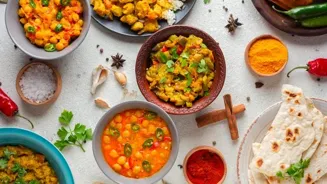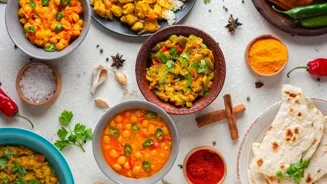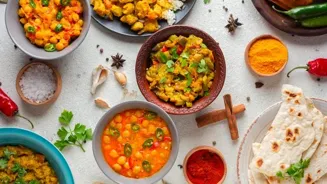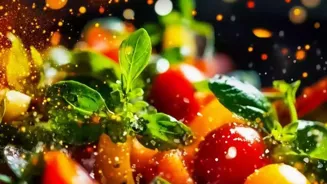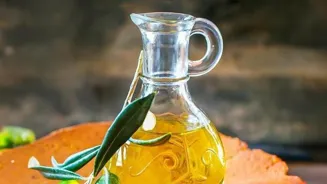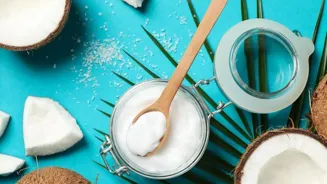Explore the wonders of coconut in Indian cuisine! From chutneys to sweets, discover 7 delightful ways coconut transforms dishes
Coconut, or "nariyal" as we fondly call it, is a staple in many Indian kitchens.
From the sunny beaches of Kerala to the bustling streets of Mumbai, coconut finds its way into a variety of dishes, adding a distinct flavour and texture.
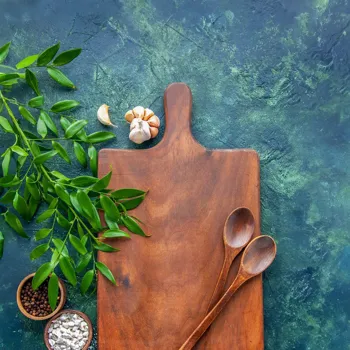
It's not just about the taste; coconut is also packed with nutrients, making it a healthy and delicious addition to your meals. Let's explore seven fantastic ways to incorporate this versatile ingredient into your Indian cooking.
Coconut Chutney: A South Indian Delight
Coconut chutney is a classic accompaniment to South Indian staples like dosas, idlis, and vadas. It's quick to make and bursts with fresh flavours. The basic recipe involves grinding fresh coconut with roasted chana dal, green chilies, ginger, and a touch of tamarind or lemon juice for tanginess.
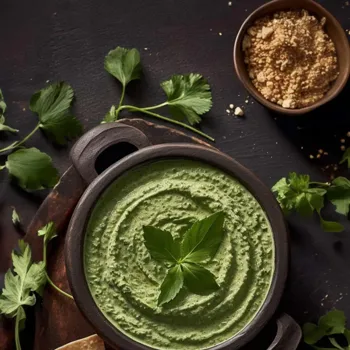
Tempering is key – a spoonful of hot oil infused with mustard seeds, urad dal, and curry leaves adds a fantastic aroma. There are endless variations; some add roasted peanuts for richness, others include mint or coriander for a herby twist. Experiment and find your perfect blend!
Key tip: Use fresh coconut for authentic taste, if you like a more tangy taste then just sprinkle some drops of lime juice.
This versatile chutney can be served as a side dish, a spread for sandwiches, or even as a dip for snacks.
The key to a great coconut chutney is using fresh ingredients and adjusting the spice level to your preference. Some like it fiery, while others prefer a milder taste. Feel free to add a pinch of sugar to balance the flavours, especially if the tamarind is too tart.
For a creamier texture, add a spoonful of yogurt while grinding. The possibilities are endless, so get creative and enjoy this South Indian favourite! Pro tip: Coconut chutney tastes best when served fresh, but it can be stored in the refrigerator for a day or two.
The beauty of coconut chutney lies in its simplicity and adaptability. It's a testament to how a few humble ingredients can come together to create something truly special and delicious.
The next time you're making South Indian food, don't forget to whip up a batch of coconut chutney to complete the meal. You won't be disappointed! Many people use this as a side dish as well and use this while enjoying the food. This is a really great side dish and healthy as well.
You must make this at home.
Coconut Rice: Aromatic and Flavourful
Coconut rice is a simple yet incredibly flavourful dish that elevates plain rice to a whole new level. It's a staple in South Indian cuisine, often served during festivals and special occasions.
There are two main ways to make coconut rice: one involves cooking the rice in coconut milk, and the other involves mixing cooked rice with grated coconut and a tempering of spices. Both methods are equally delicious.
Using coconut milk will give the rice a richer, creamier texture, while using grated coconut will impart a more distinct coconut flavour.
For the coconut milk version, simply replace the water with coconut milk while cooking the rice. Add a pinch of salt and a few cardamom pods for extra aroma.
For the grated coconut version, cook the rice as usual and then mix it with freshly grated coconut, mustard seeds, curry leaves, and a pinch of turmeric. Both versions are incredibly easy to make and can be customized to your liking.
Add some vegetables like carrots, peas, or beans for a more nutritious meal. You can also add cashews or peanuts for some crunch.
Coconut rice is a versatile dish that can be paired with a variety of curries, dals, and vegetables.
It's especially delicious with South Indian dishes like sambar, rasam, and vegetable korma. The subtle sweetness of the coconut complements the spicy and tangy flavours of these dishes perfectly. You can even enjoy coconut rice on its own with a dollop of yogurt or raita.
It's a comforting and satisfying meal that's sure to please everyone at the table. The aroma of cooking rice infused with the lovely flavor of coconut will transport you or your family to a happy place.
Coconut Curry: Creamy and Delicious
Coconut curry is a broad term that encompasses a wide range of curries made with coconut milk or grated coconut. These curries are popular across India, especially in the coastal regions.
From the Goan vindaloo to the Kerala fish curry, coconut plays a crucial role in adding richness, flavour, and texture to these dishes. The base of a coconut curry usually consists of onions, tomatoes, ginger, garlic, and a blend of spices.
Coconut milk or grated coconut is then added to create a creamy and flavourful sauce.
The type of vegetables or ingredients used in the curry can vary greatly depending on the region and personal preference. Popular choices include potatoes, cauliflower, peas, paneer, and even lentils.
The spices used can also vary, but common ones include turmeric, coriander, cumin, chili powder, and garam masala. Coconut curries can be mild or spicy, depending on the amount of chili powder used. The key to a great coconut curry is to balance the flavours and textures perfectly.
One of the great things about coconut curries is that they are incredibly versatile. They can be served with rice, roti, naan, or even bread. They are also a great way to use up leftover vegetables. Simply add them to the curry and let them simmer until tender.
Coconut curries are a comforting and satisfying meal that's perfect for any occasion. It's a treat to have a good meal like vegetable korma with coconut milk. This simple dish creates wonder taste .
Coconut Barfi: A Sweet Treat
Coconut barfi is a traditional Indian sweet made with grated coconut, sugar, and milk. It's a popular treat during festivals and celebrations. The recipe is simple: sauté grated coconut in ghee until it turns slightly golden, then add sugar and milk and cook until the mixture thickens.
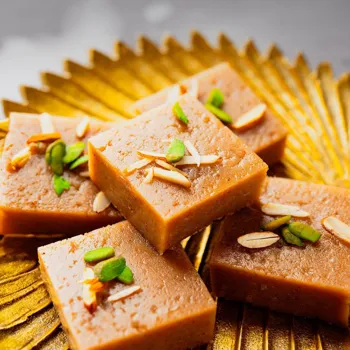
Once the mixture cools down, it's spread on a greased tray and cut into squares or diamonds. The key to a good coconut barfi is to use fresh coconut and to cook the mixture until it reaches the right consistency.
There are many variations of coconut barfi.
Some add cardamom powder for flavour, while others add nuts like almonds or cashews for a richer taste. You can even add food colouring to make it more festive. Coconut barfi is a relatively healthy sweet, as it's made with natural ingredients and is not overly processed.
It's also a great source of fiber and healthy fats. Coconut flavour is so enticing that children often like it a lot.
So if you're interested in making for your family or friends then this is the best option
Coconut barfi is a delicious and satisfying treat that's perfect for satisfying your sweet tooth. It's easy to make, relatively healthy, and can be customized to your liking.
Experiment with different flavours and add-ins to create your own signature version. It is a bit time staking process to prepare this Indian dessert. So please gather all items required before starting. Coconut barfi is one of the most common desserts that we find in most parts of India.
Coconut Ladoo: Bite-Sized Bliss
Coconut ladoo is another popular Indian sweet made with grated coconut, condensed milk, and cardamom powder. It's a quick and easy recipe that requires no cooking. Simply mix the ingredients together, shape them into small balls, and roll them in desiccated coconut.
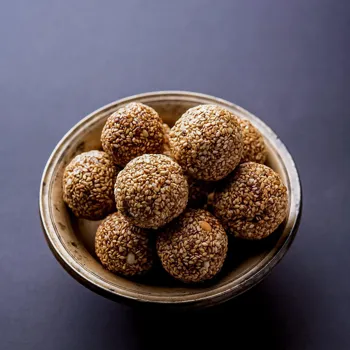
Coconut ladoos are a common sight during festivals and are often given as prasad (offering) in temples. The sweetness and texture of these laddos are irresistible. Make sure to use fresh ingredients in this recipe.
The beauty of coconut ladoos lies in their simplicity and convenience.
They can be made in a matter of minutes and require no special equipment. They are also a great option for those who are new to Indian cooking. You can customize coconut ladoos by adding different flavours and textures. Add chopped nuts, raisins, or even a pinch of saffron for a richer flavour.
Coconut ladoos are a perfect sweet treat for any occasion. They are small, delicious, and easy to make. They are also a great option for gifting to friends and family. The richness and flavor of coconut will make our tastebuds craving for more.
Try to use fresh coconut every single time which will enhance the taste a lot. This sweet has a shelf life period of almost 2 weeks. It makes a good snack for kids.
Coconut Milk Puddings: A Tropical Delight
Coconut milk puddings are a refreshing and creamy dessert that's perfect for hot summer days. They are popular in many Southeast Asian countries, but they can also be easily adapted to Indian flavours.
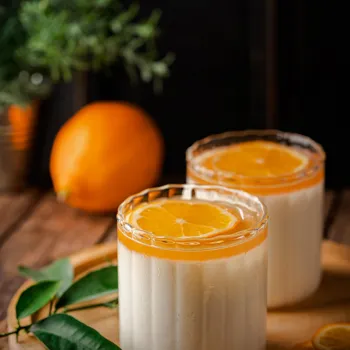
The base of a coconut milk pudding is usually made with coconut milk, sugar, and a thickening agent like agar-agar or gelatin. The pudding can then be flavoured with various ingredients like cardamom, saffron, or rose water.
One popular Indian version of coconut milk pudding is known as "Nariyal ki Kheer." To make this, mix coconut milk with sugar, cardamom powder, and a small amount of rice flour for thickening. Cook over low heat until the mixture thickens, then chill in the refrigerator before serving.
Another variation involves adding chopped fruits like mangoes or pineapple for a tropical twist. Coconut milk puddings are a light and refreshing dessert that are easy to digest.
Coconut milk puddings are a great way to end a meal on a sweet note.
They are also a healthy option, as they are low in fat and calories. You can use different flavours and toppings to create unique and delicious desserts. Try adding a drizzle of honey or a sprinkle of chopped nuts for extra flavour.
Coconut in Vegetable Dishes: A Subtle Enhancement
Grated coconut can add a distinct flavour and texture to various vegetable dishes. It's commonly used in South Indian cuisine to enhance the taste of dishes like avial, thoran, and vegetable stir-fries.
Simply sprinkle grated coconut over the cooked vegetables before serving to add a touch of sweetness and nuttiness. Using coconut in veggies will also add additional fibers and nutrients.
The amount of coconut used will depend on your personal preference.
Some like a generous amount, while others prefer a more subtle flavour. You can also temper the coconut with mustard seeds, curry leaves, and asafoetida for a more aromatic flavour. Coconut pairs well with a variety of vegetables, including beans, carrots, cabbage, and spinach.
Adding coconut to vegetable dishes is a great way to add extra flavour and nutrients to your meals. It's a simple and easy way to elevate your cooking and make your dishes more interesting and delicious. It takes minimal effort but the result is extraordinary.
AI Generated Content. Glance/InMobi shall have no liability for the content
